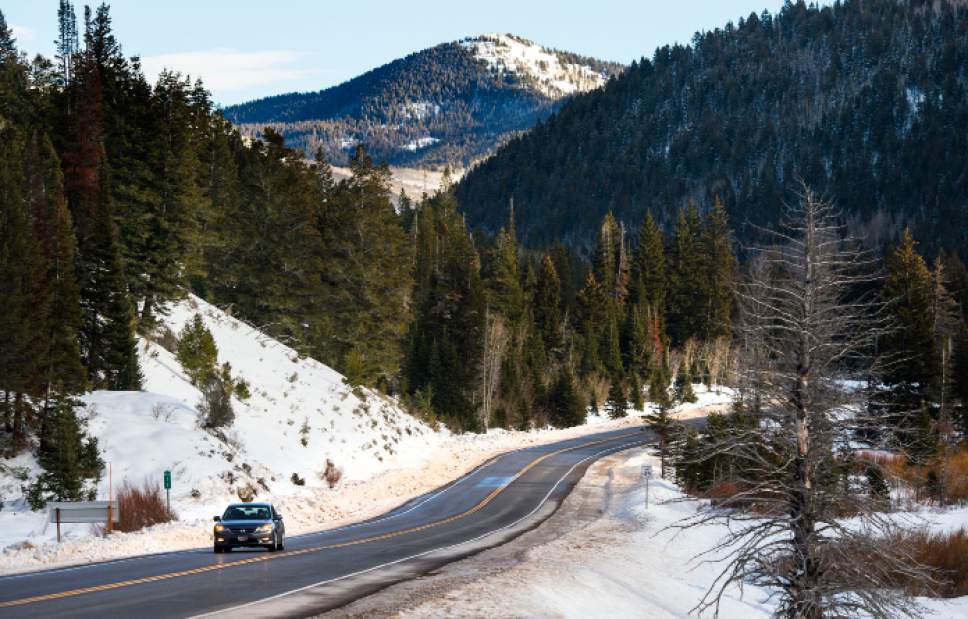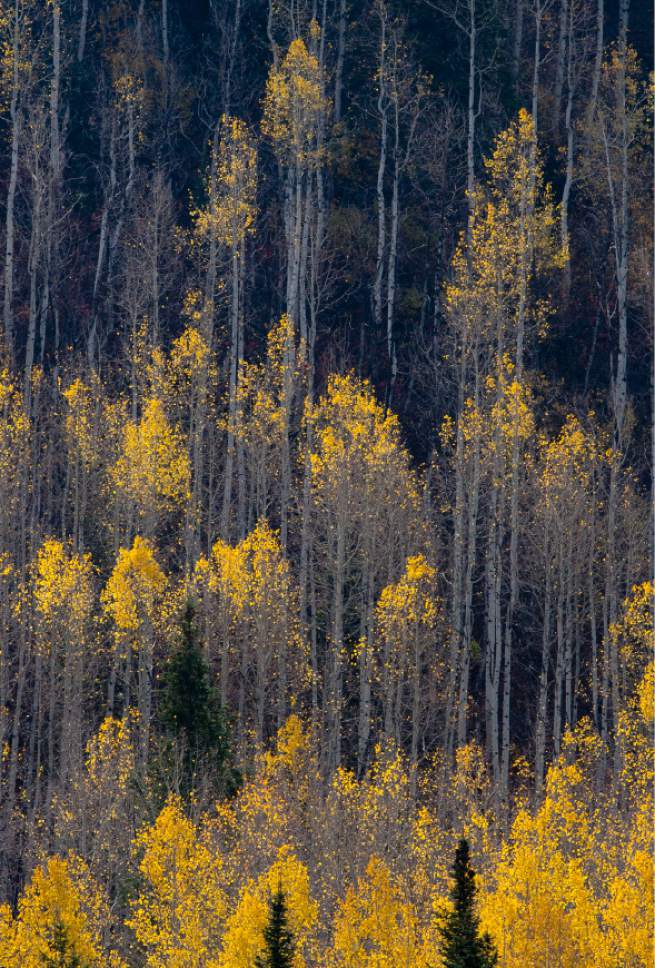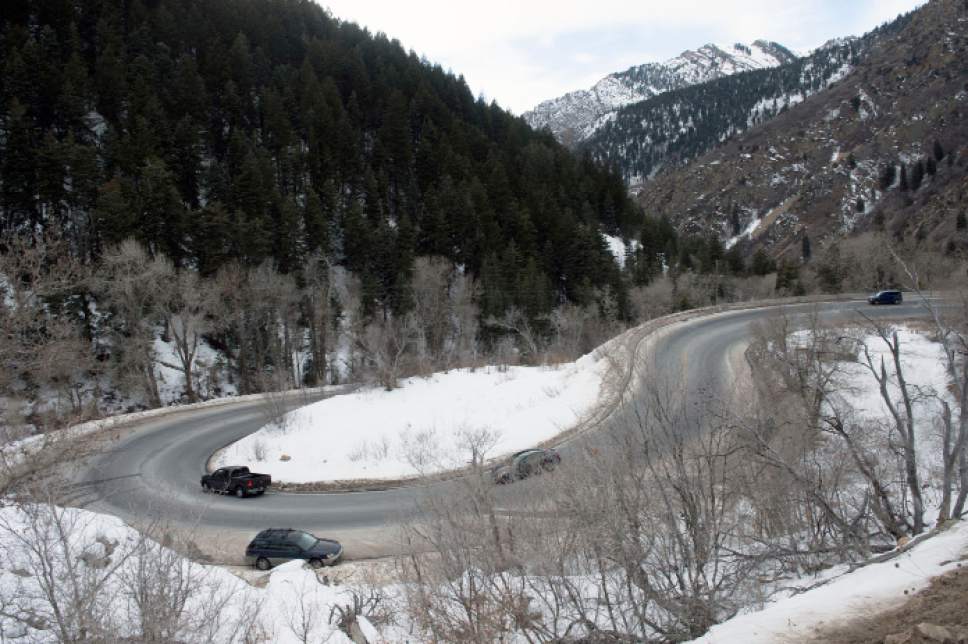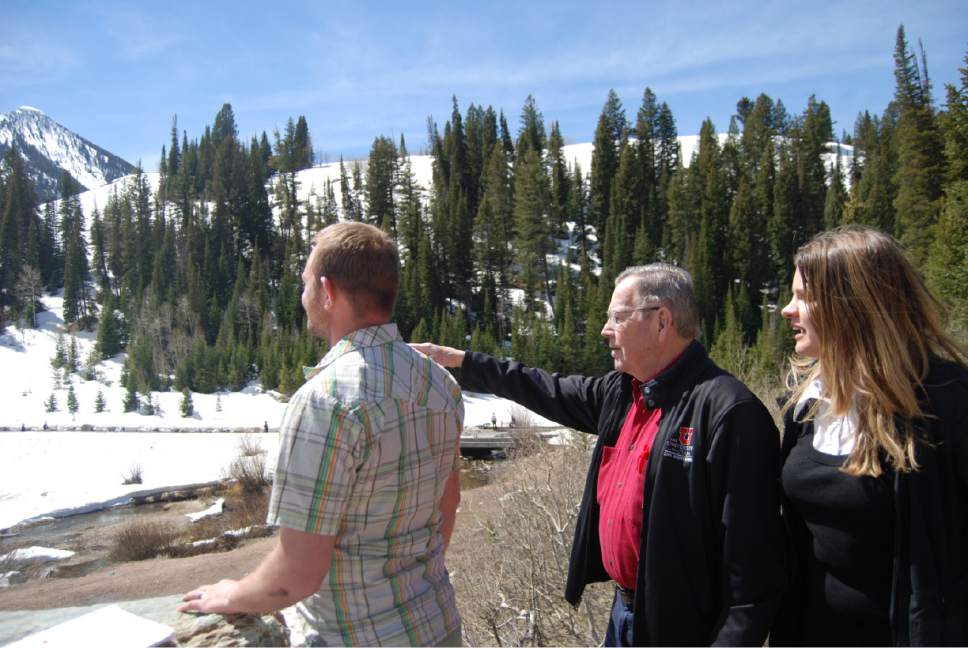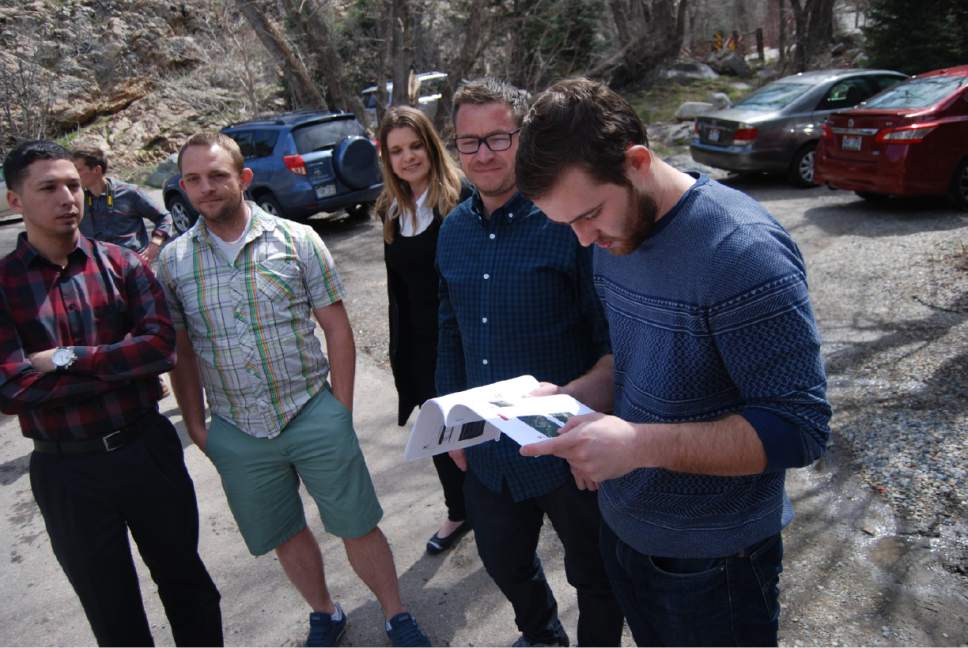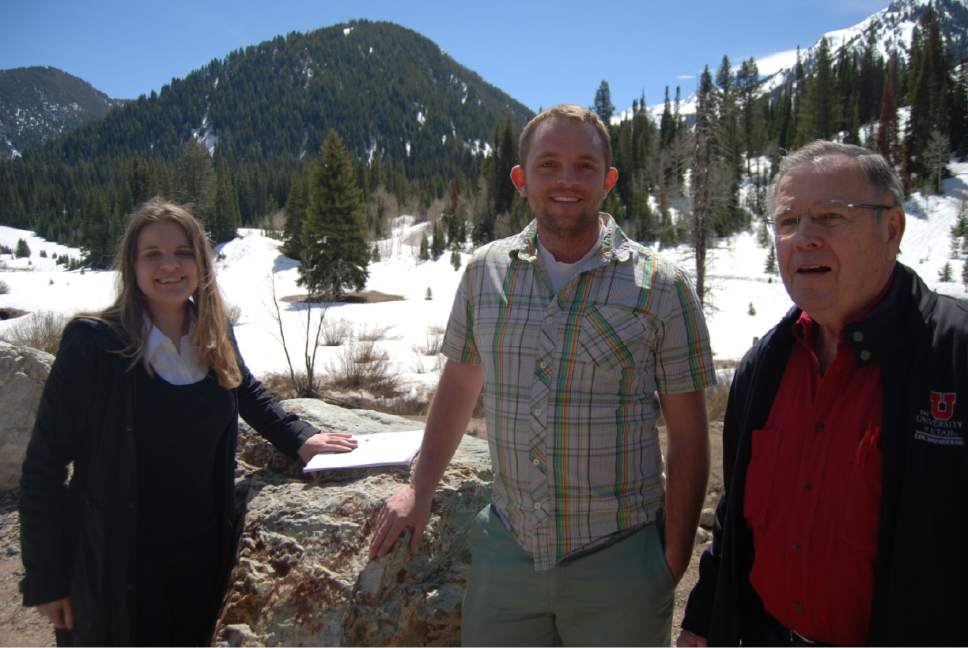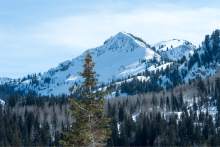This is an archived article that was published on sltrib.com in 2017, and information in the article may be outdated. It is provided only for personal research purposes and may not be reprinted.
Big Cottonwood Canyon • A few miles up the gorge, sandwiched between Mount Olympus and Twin Peaks, the highway makes two sweeping bends where the canyon takes a steep step up to Elbow Fork.
On busy weekends, the challenges vexing this popular canyon southeast of Salt Lake City are on full display at the "S-Curves."
Vehicles, pedestrians and cyclists are packed together where the road passes a trailhead, whose parking lot is typically so full that cars park along the road. The situation can be dangerous, chaotic and not much fun for anyone.
University of Utah engineering major Brian Naylor and his classmates have some ideas they say could make this and other busy places in the canyon safer, more sanitary and less congested.
Naylor is part of student team of civil and environmental engineering seniors commissioned by the Big Cottonwood Canyon Community Council to develop proposals for managing traffic and raising revenue to maintain restrooms and recreation amenities in a canyon visited by up to 3 million a year.
Among their ideas: to restripe the road to mark bike lanes; reconfigure parking lots to pack in more cars; keep parked cars off the highway; install more restrooms; and expand transit service so buses run year-round and include new stops at unserved locations like the S-Curves.
"Our vision would be to have separation of cycling and pedestrians from vehicle traffic," Naylor said.
—
Better access • Such solutions would cost money, but the students have answers for that, too: a toll that would raise as much as $3.6 million a year, while giving visitors an incentive to ride a bus or carpool.
The U. team will present its proposal Tuesday at 9:30 a.m. at the A. Ray Olpin Student Union Building on campus. The public is invited to question the students and critique their proposal, which they say will enable greater use, while reducing impacts.
"Twenty-nine percent more people can use the canyon at the same service," student Jackson Barrett said. "You drastically increase the amount of people who can come hike and enjoy the canyon.
Funds raised by the toll, Barrett said, would be devoted to maintaining and improving canyon access and facilities. "Making sure the money stays in the canyon is a big priority," he said.
Barbara Cameron, a 20-year Silver Fork resident who heads the Big Cottonwood council, praised the students for investigating the canyon's pressing problems, which are predicted to get worse absent intervention.
"They have done a wonderful job," she said, "but they need help."
—
Lots of plans • There has been no shortage of thought, analysis and debate poured into the search for answers to the growing congestion in the Cottonwood canyons in recent years as Salt Lakers grapple with the reality that their "Forest Next Door" is reaching its limits for accommodating visitors flocking to its world-class ski areas, alpine meadows and mountain trails.
The Mountain Accord process has yielded a series of proposals on the canyons that would require the formation of the multiagency Central Wasatch Commission to put in place. Meanwhile, the Uinta-Wasatch-Cache National Forest is finalizing its own proposal for a $6 recreation fee to generate revenue needed to take care of the trailheads, trails and picnic areas at Mill B, Silver Lake, Cardiff Fork, Spruces, Guardsman Pass and Donut Falls.
While these proposals were developed with regulation and political realities in mind, the U. students' assignment excused them from worrying about such obstacles, according to professor David Eckhoff.
"We decided to bypass some of those barriers and think of functioning solutions for this community we think would work," said student Victoria Sorrentino.
Some observers find the students' proposals unworkable under the Forest Service's management constraints, which prohibit expansion of parking capacity. Any toll put in place in Big Cottonwood Canyon would have to be matched with a toll on its equally popular little brother to the south. Then there are the political dimensions.
The national forest's proposed fee, already in place on American Fork and Mirror Lake Highway, has been met with some support, but also intense opposition from those who object to being charged for visiting public lands. Silver Fork Lodge owner Dan Knopp, for example, fears such moves would accomplish little except keeping people out.
But most everyone agrees something has to change.
—
Pay to play? • The Big Cottonwood drainage sees about 60 to 94 visitors per acre a year, although most of them are concentrated on ski slopes and narrow trail corridors, according to the students' report. By contrast, Yellowstone National Park sees about two visitors per acre.
Any solution has to include reducing vehicle traffic in favor of bus transport, which is currently available during ski season only, according to Laynee Jones, Mountain Accord's director.
"We call the toll a 'stick,' " Jones said. "People will want to try the 'carrot' first, a really good bus system. What if buses came every five minutes and there were places to park in the valley to catch the bus. I don't think the public is going to accept a tolling system right out of the gate."
But the students say school parking lots near the canyon mouth can be used as park-and-ride lots on weekends and they structured their toll with traffic reduction in mind by making it more costly to drive at high-traffic times.
This system would charge all nonresidents driving into the canyon a fee of between $3 and $12. If traffic loads exceed 800 cars per hour, you would pay the highest rate as you enter the canyon's mouth, according to student Brandon Quinton.
To avoid bottlenecks, Quinton said, the toll would be automatically debited from the driver's account through a scanning technology.
The Forest Service fee, by contrast, would be imposed only on those who park at developed national forest amenities using a more low-tech system of collection: a metal tube you shove money in or an annual pass you display on your dashboard.
The students' toll would have a far bigger impact on revenue and driving decisions, they say.
"We know it's going to be a culture shock," student Quentin Allen said. "When it improves their travel times and the amount of time they can spend hiking or skiing, that's the real benefit."
Brian Maffly covers public lands for The Salt Lake Tribune. Maffly can be reached at bmaffly@sltrib.com or 801-257-8713.
Twitter: @brianmaffly —
Big Cottonwood Canyon 3T Management Project
P University of Utah engineering students developed a proposal to manage the "three Ts" in the popular canyon: traffic, toilets and trails. They will present their proposal Tuesday at 9:30 in the Union Building at the University of Utah.


